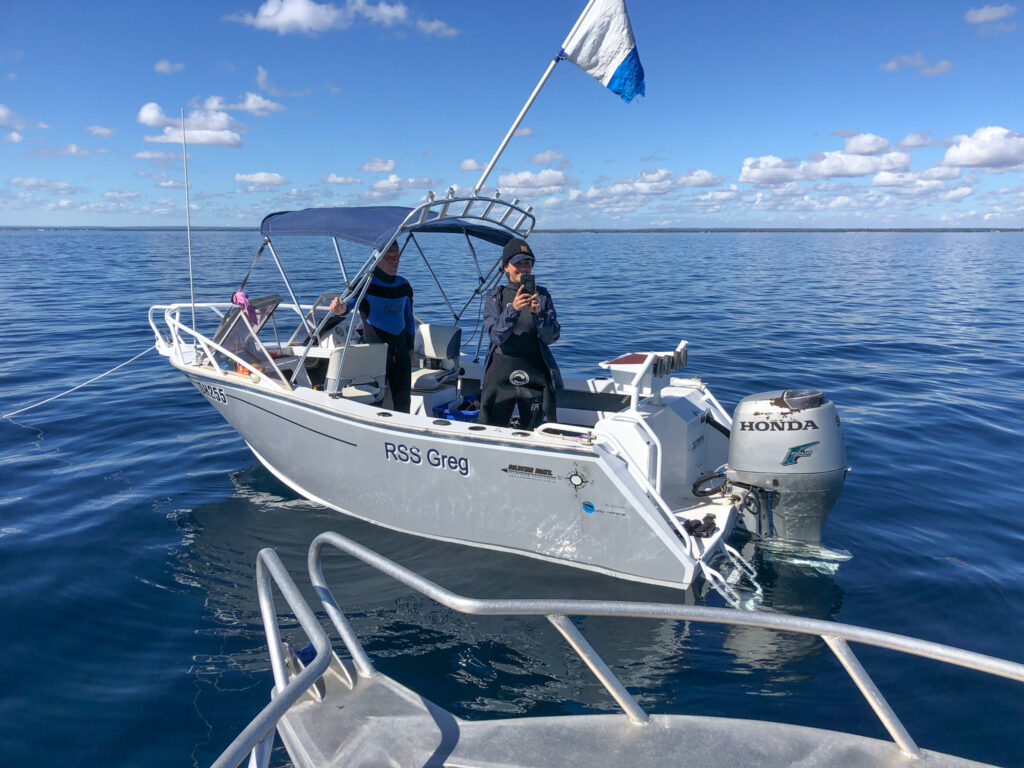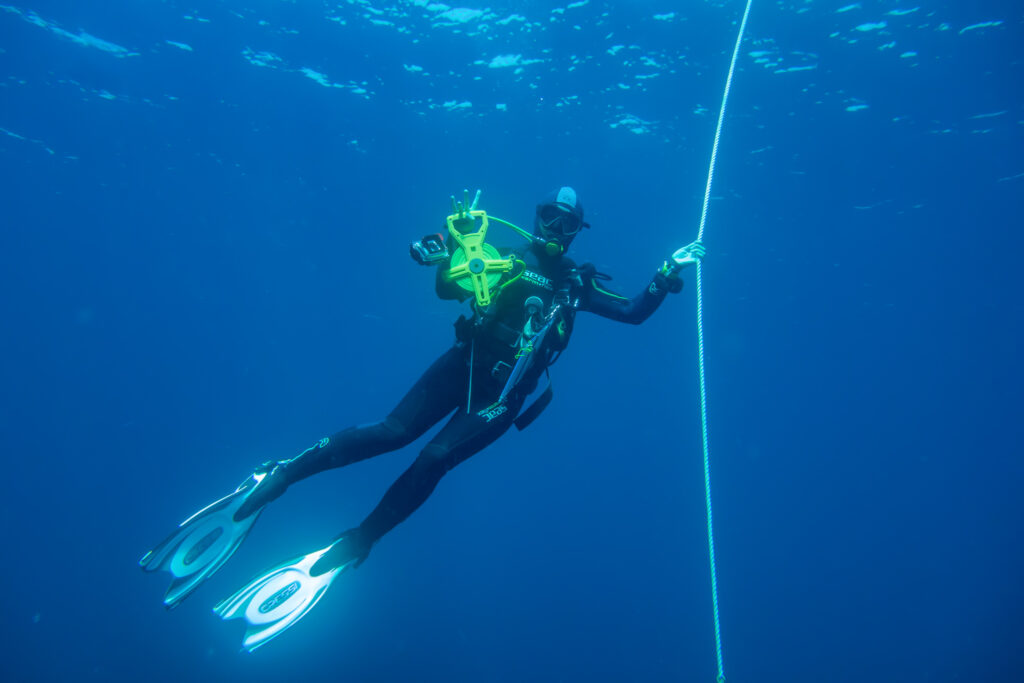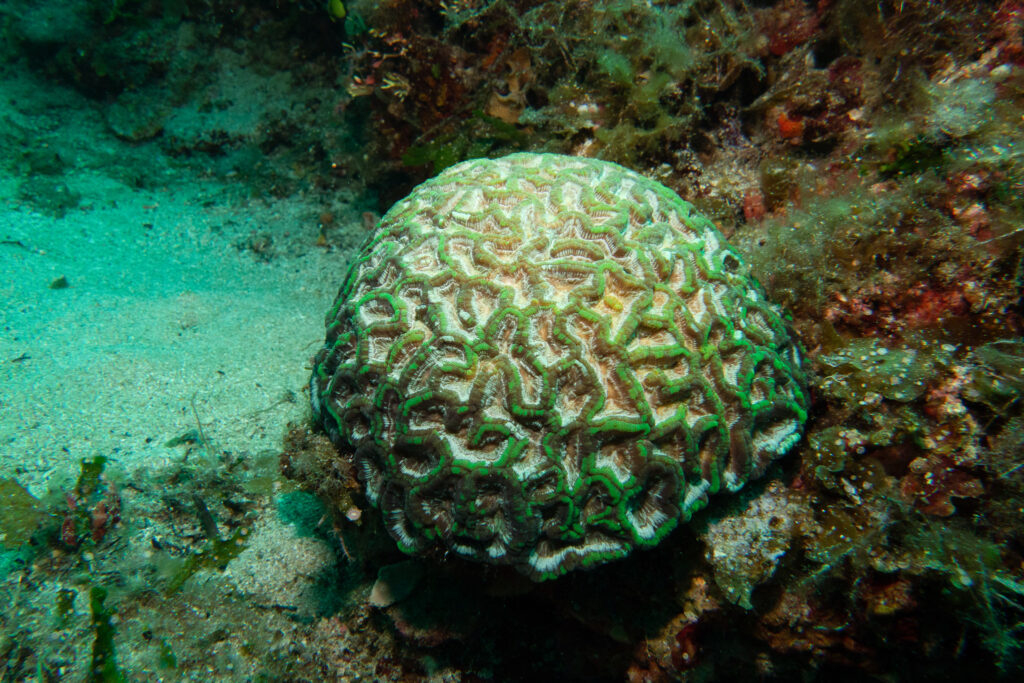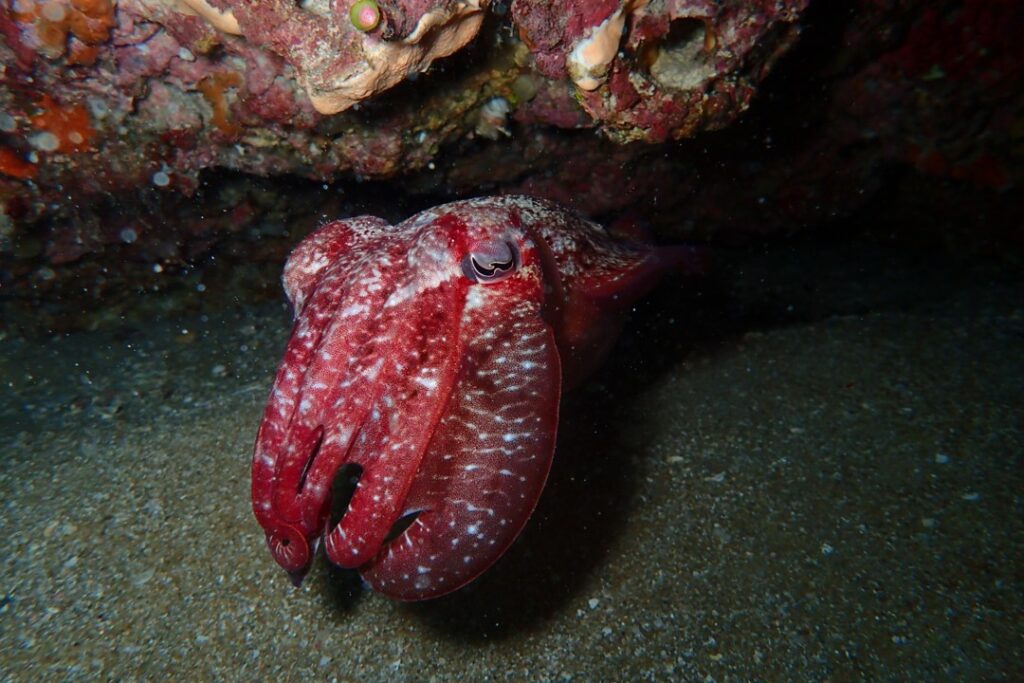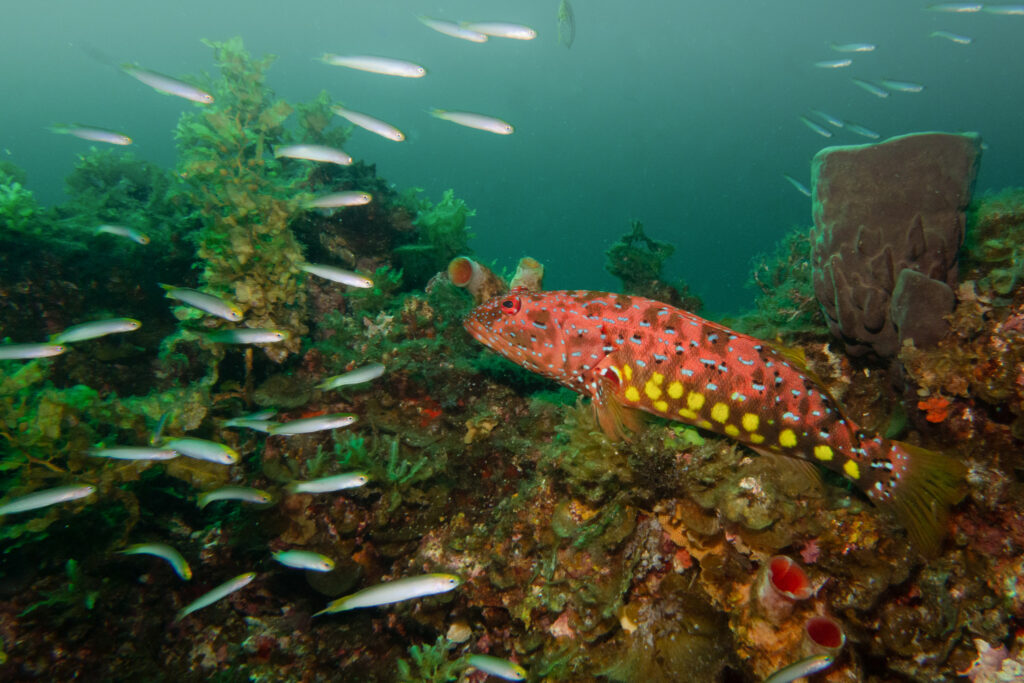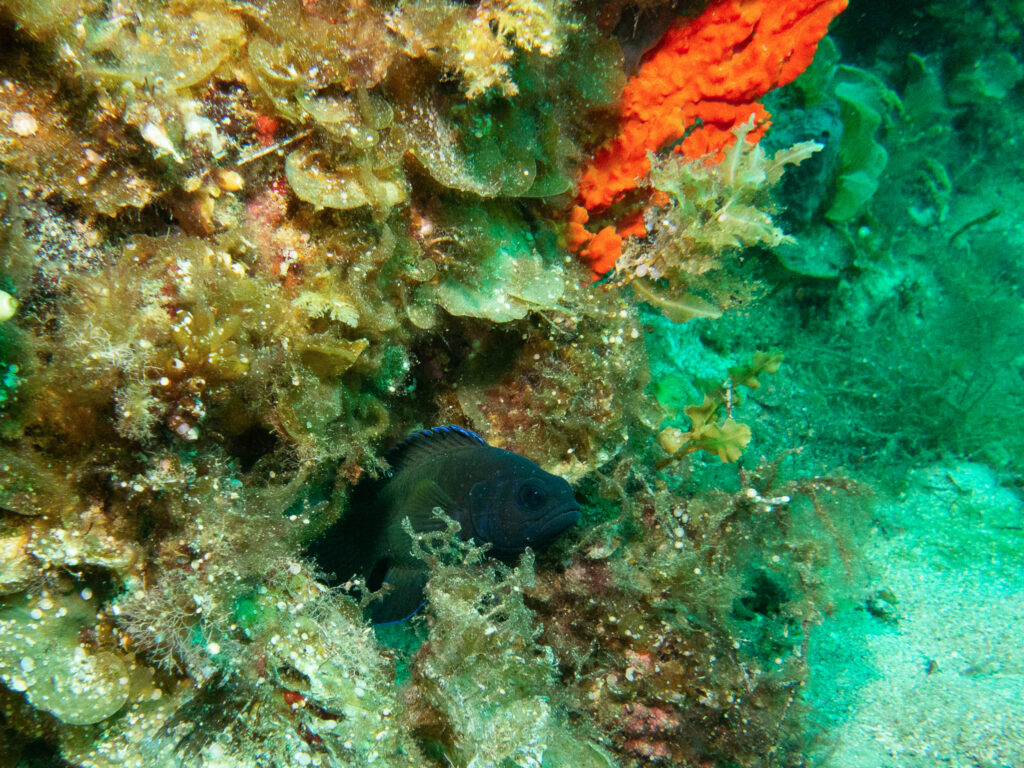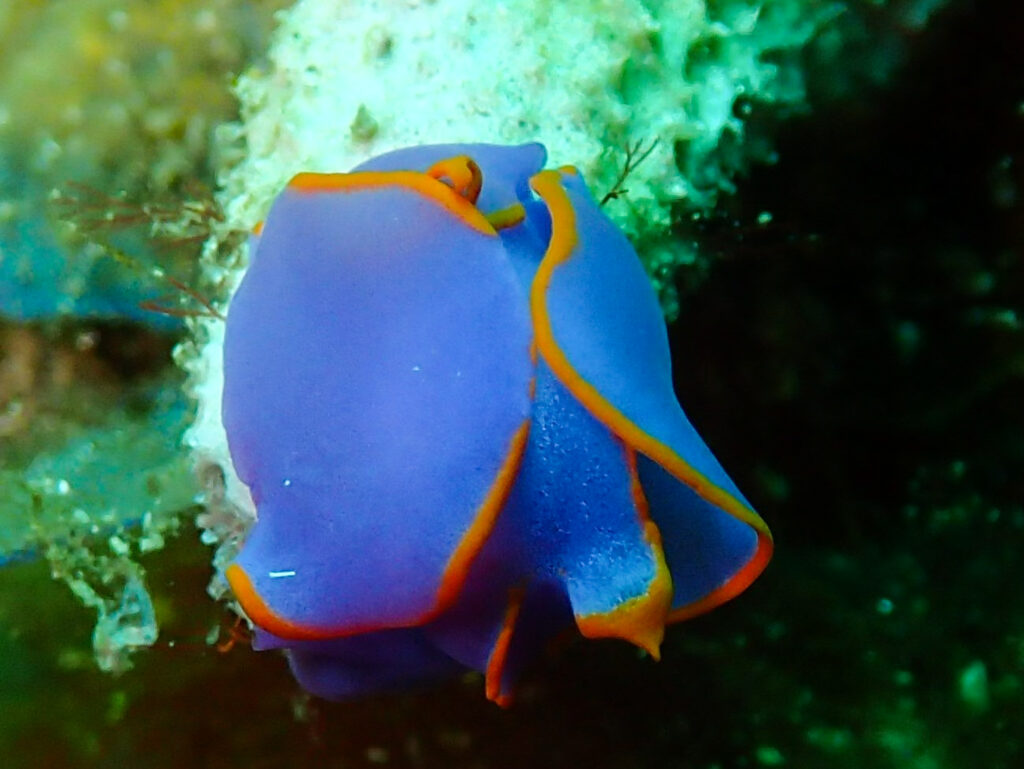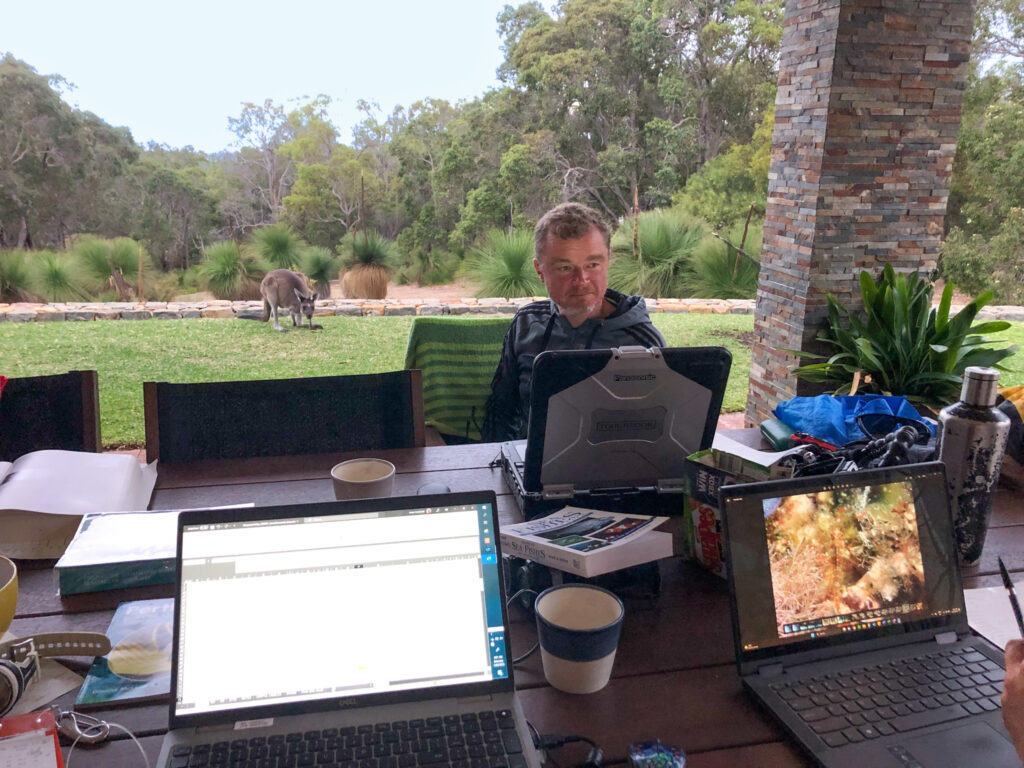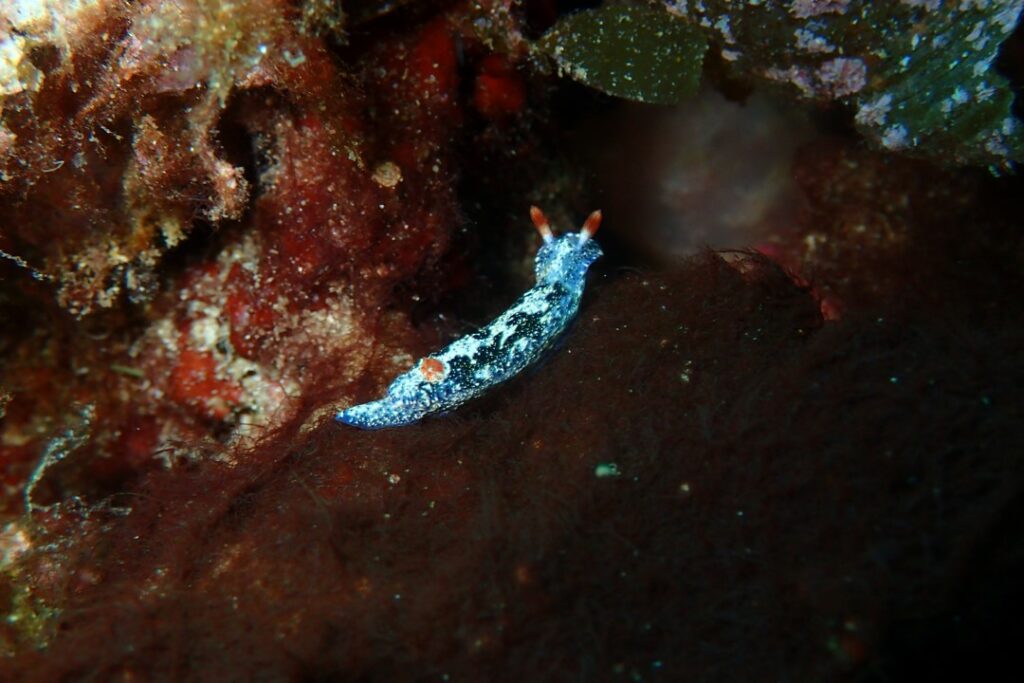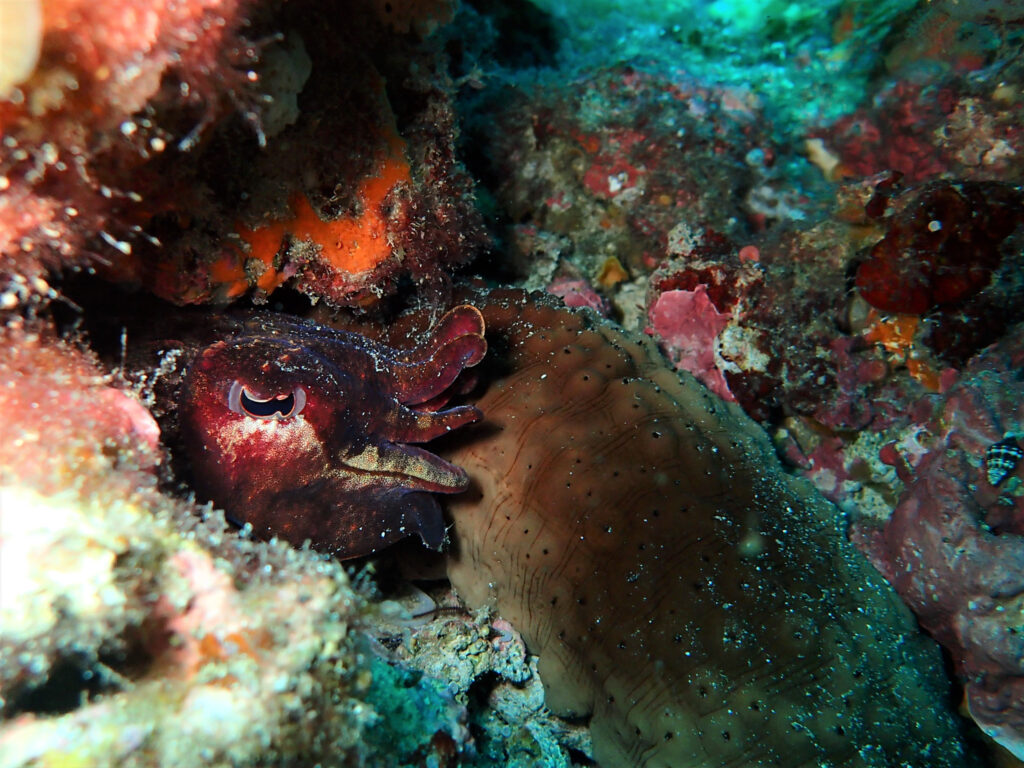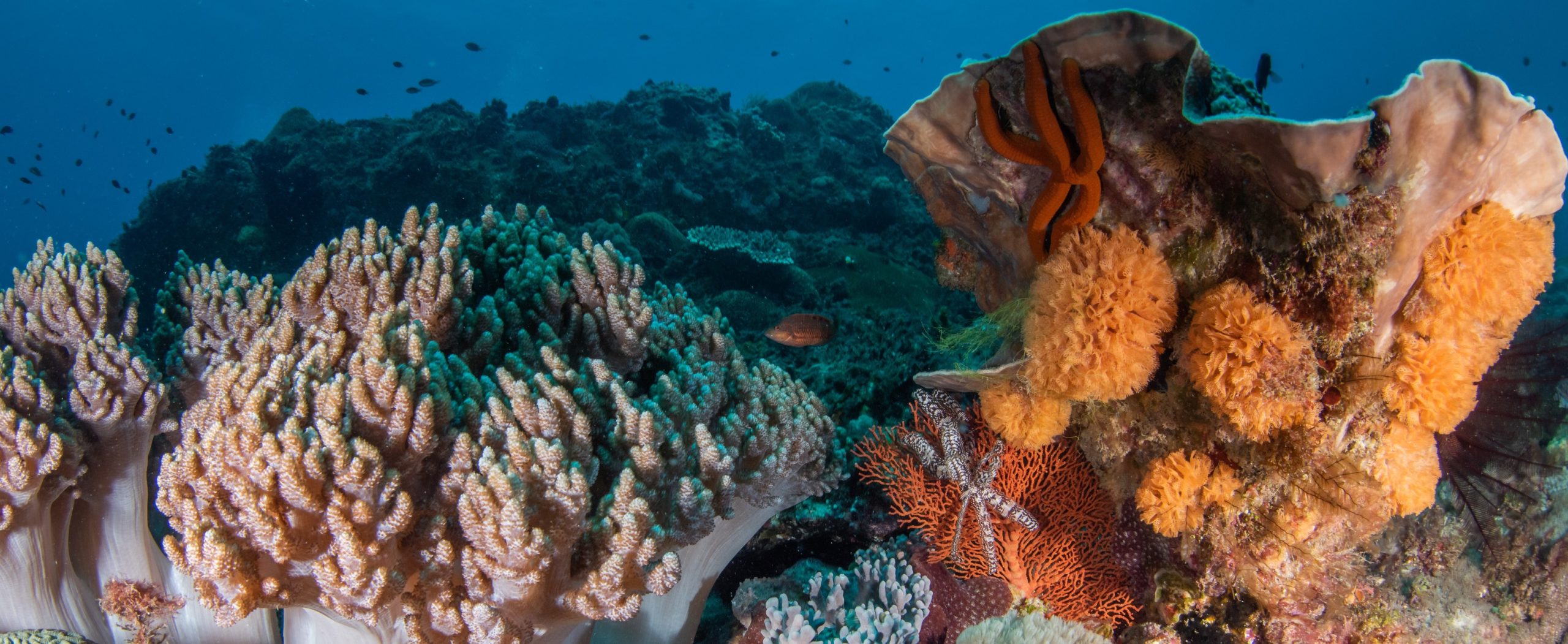Our 2023 trip marked my fourth visit to Geographe Bay, and this time the team was made up of fearless trip coordinator and leader Paul, with dedicated support from Kevin who would captain the boat RSS Greg, as well as Alicia, Elle and myself (Anna). During the trip, we were fortunate to stay with long-time RLS volunteers Wendy and Chris who live in a beautiful location overlooking Geographe Bay. Wendy would dive with us, and Chris would skipper our second boat.
Looking at Geographe Bay from above the water, you might not expect it to have particularly interesting reef below, as it is a large and relatively flat bay with a mostly sandy bottom. But underneath the surface at 18m depth, there are patches of reef that host bustling cities where the most fabulous marine creatures are going about their business. My first Reef Life Survey trip to Geographe was in 2017. On that trip we were lucky to be scoping out and creating new RLS sites inside and outside the Australian Marine Park with fun names including Squiggly Reef (named from a Lidar image which captured the winding shape of the reef below), Devil’s Lair, and Coral Gardens. On my first dive in the Bay I followed my buddy off the back of the boat into a school of Samson fish (Seriola hippos) which swirled around us as we descended and gave that site its name ‘Hippo Creek’.
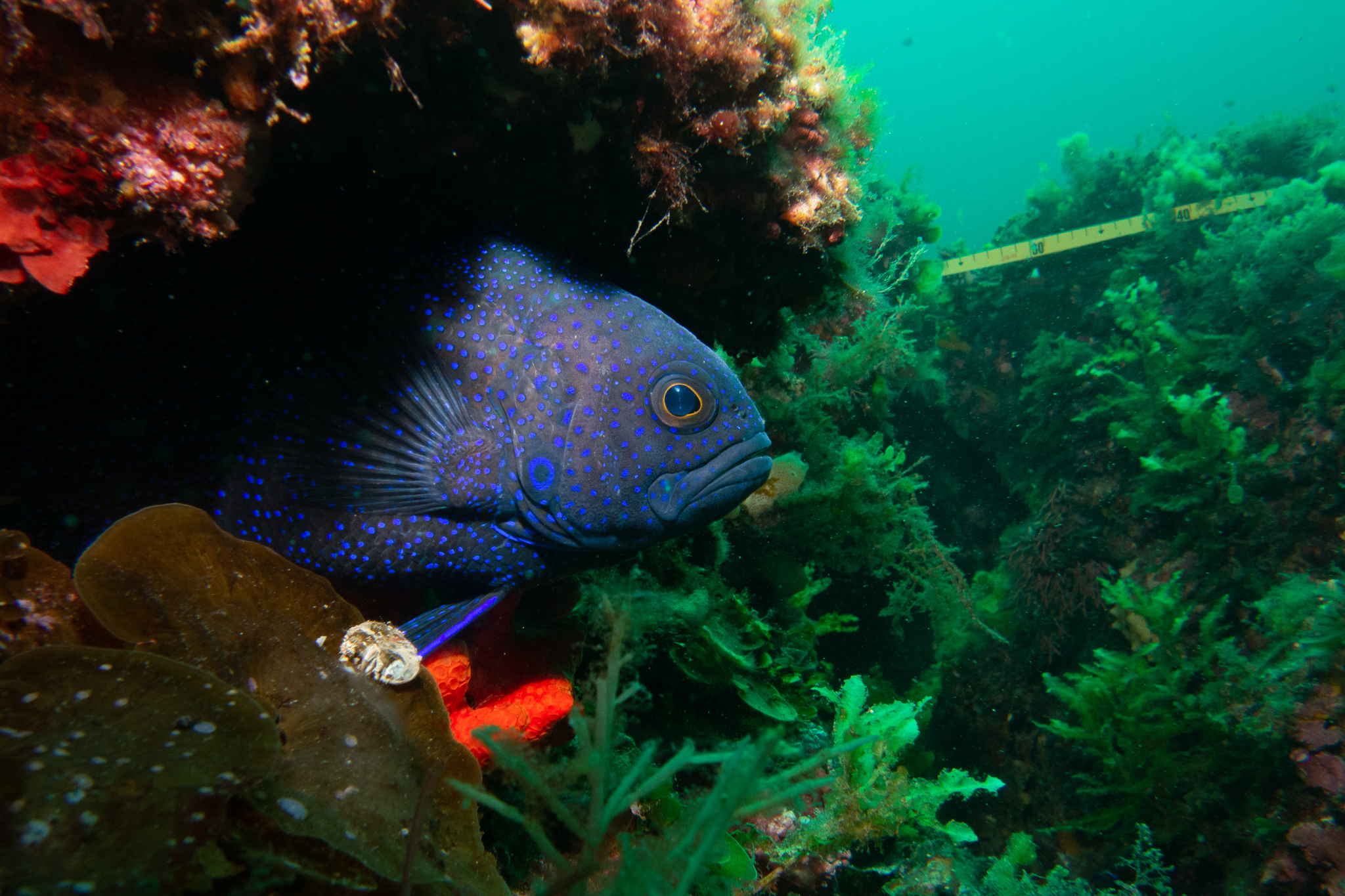
This time around, we arrived Thursday night and woke Friday morning to peer out at the Bay through binoculars over a cup of tea. A bit windy. A bit wild. Not the glass off I remembered from previous trips. We headed out to Hippo Creek nonetheless. Alicia and I did our first dive after Kevin’s wetsuit zip broke which resulted in him being relegated to surface attendant. The wetsuit zip was definitely needed, as even in a 7mm wetsuit with my dive computer reading 20 degrees Celsius, I was still shivering by the start of the M2 survey on all dives. Despite the windy conditions on the surface, it was cold but calm at 18m below.
For me these surveys now feel like I am visiting old friends. At these patches of reef there are many site-attached fish which likely spend most of their life in these single locations. I met my first southern blue devil (Paraplesiops meleagris) in Geographe Bay in 2017 and they have remained my favourite fish ever since, with other favourites including the western talma (Chelmonops curiosus), harlequin fish (Othos dentex), and the schools of hulafish (Trachinops noarlungae) that are sometimes so abundant they decrease the visibility. Shivering along the M2 survey I peered into caves, searching for invertebrates and cryptic fish on the M2 survey, often encountering the frowning face of my favourite southern blue devil.
Saturday brought slightly better weather conditions and Kevin and I set out on RSS Greg (wetsuit fixed with some MacGyver-inspired mending) while the rest of the team were on Chris and Wendy’s boat. On our first survey we were treated to another face peering out of the caves: the western blue devil (Paraplesiops sinclairi). Similar to the southern blue devil, but darker in colour and shyer. This was my first time seeing this species.
If we weren’t faced with a blue devil at a cave entrance, then it may be bullseyes (Pempheris spp.), old wives (Enoplosus armatus), a spotty seaperch (Hypoplectrodes wilsoni) hanging upside-down from the roof, a sea cucumber, or a cuttlefish. On this trip I found the smallest and cutest cuttlefish I have seen yet! We also saw the elusive silver spot (Chironemus maculosus) at four sites, and the yellowspotted boarfish (Paristiopterus gallipavo) at Devil's Lair. Paul even spotted a loggerhead turtle (Caretta caretta)! I wasn’t sure if he was joking when he reported this as it was April 1st, but photographic evidence confirmed it.
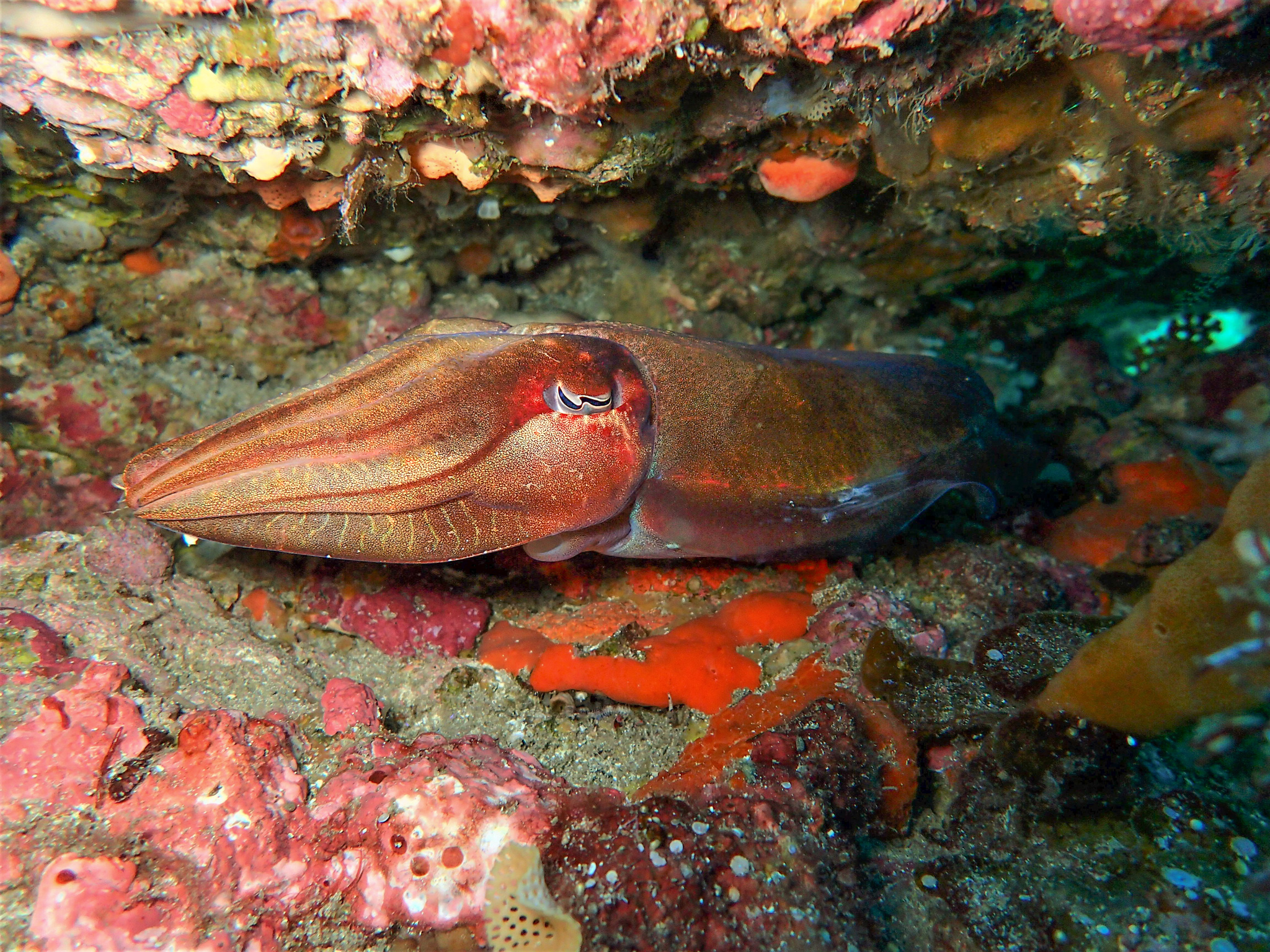
Finally, good weather arrived on Sunday in time for us to finish off the last few sites and then head back to the ranch for data entry. In total, we completed 12 transects at 6 sites. We recorded 72 species of fish on M1, as well as 22 cryptic fish species and 24 species of invertebrates on M2. A huge thanks to trip coordinator Paul Day for his organisational efforts as always! And to Chris and Wendy for their generous donations of time, hospitality, and skippering and diving skills. Geographe Bay is a regular stop for the RLS team, and we hope to continue surveying this special area for years to come.
Until next time!
